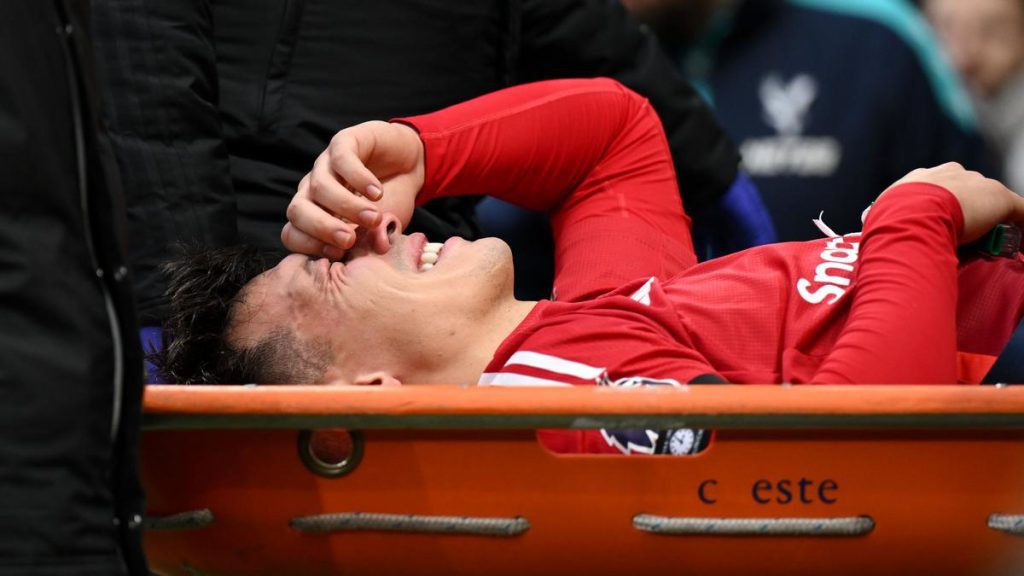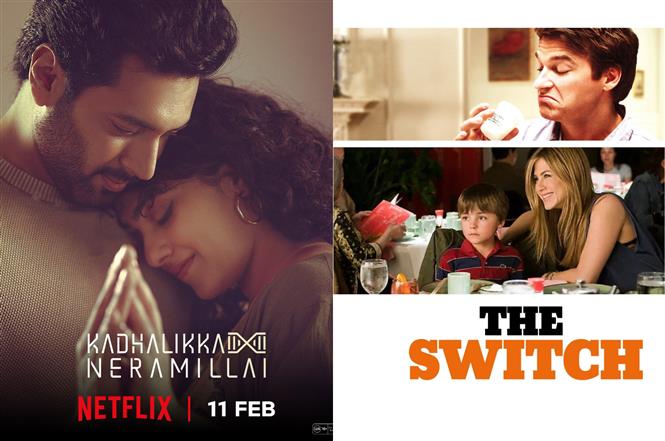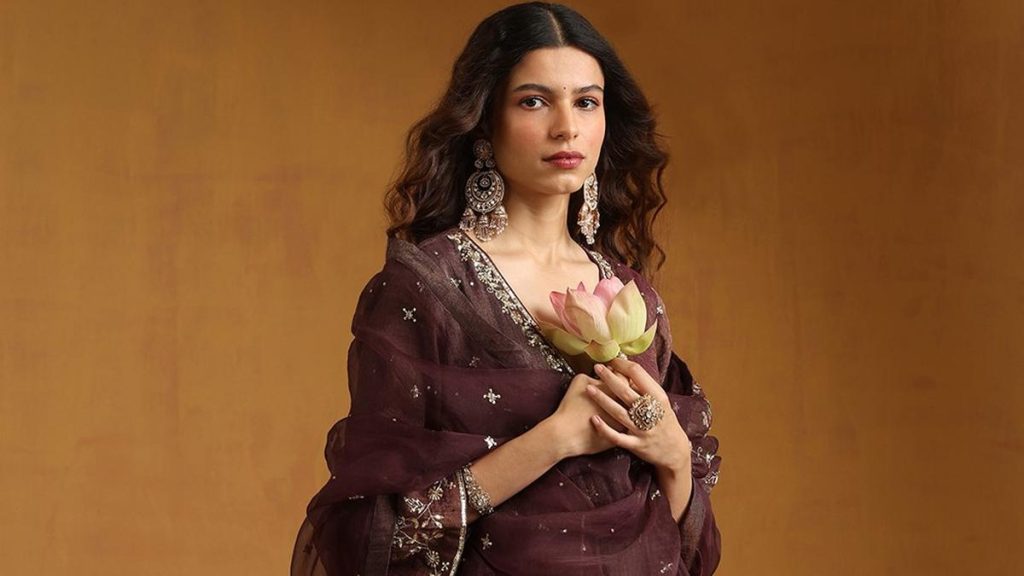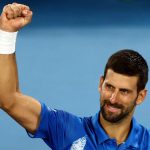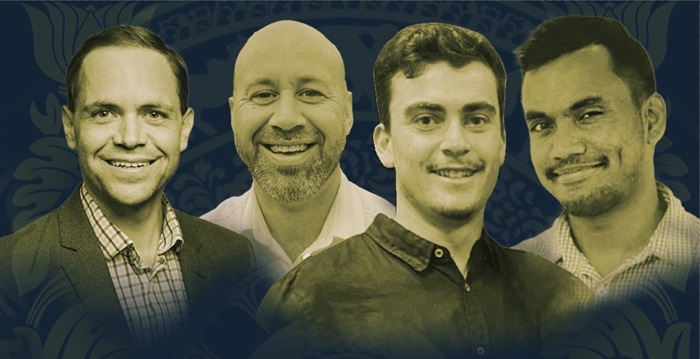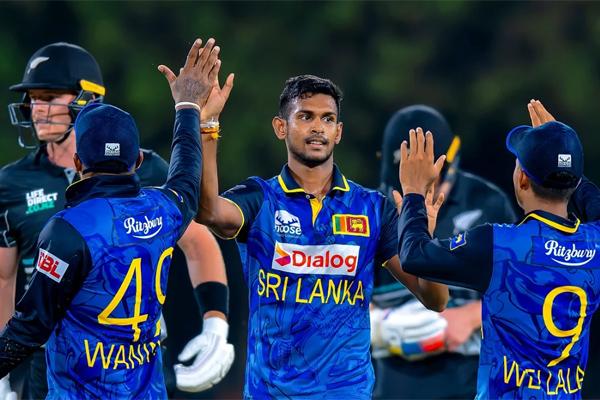World championships medallist Nishant Dev bets on himself ahead of professional debut in Las Vegas


World championships medallist Nishant Dev bets on himself ahead of professional debut in Las Vegas
When he looks out of the window of his rented one-bedroom apartment in the township of Spring Valley, Nevada, Nishant Dev says he can see the dazzling bright lights of the Las Vegas Strip in the distance. The Strip is just a small patch of development but one that is world-famous. Like moths to a flame, hundreds of thousands of punters flock here daily, spending billions of dollars in the hope of striking it lucky at one of the many casinos dotting this stretch of real estate.
Nishant is making a risky gamble here too, although not on card tables or slot machines. The 24-year-old, considered by many to be one of India’s highest-rated prospects in amateur boxing, is betting on himself. These days, he can be found training at the Top Rank boxing gym not far from his apartment as he prepares to make his professional debut in Las Vegas on January 25.
“When people find out I’m in Las Vegas, they think I’m just going around the casinos and having a good time. But I’ve never gambled in one of these casinos. I don’t really understand how to play there. What I know is that I have a destiny in boxing. My destiny is to become a professional boxing world champion. I am here because I want to fulfil that destiny,” he says.
Nishant has been training here for several weeks, but the public announcement of his transition to professional boxing came only a week ago through a social media post on Instagram by Matchroom Sport. The post announced his signing with the boxing promotion and his upcoming bout on the undercard of the super-middleweight clash between Steve Nelson and Diego Pacheco.
As far as signings go, Nishant couldn’t have done much better. Matchroom is one of the biggest names in boxing promotions, with a stable of prize fighters that includes multi-division champion Canelo Alvarez, WBA light-heavyweight champion Dmitry Bivol, former undisputed heavyweight champion Anthony Joshua, and undisputed female lightweight champion Katie Taylor.
Nishant doesn’t have anywhere near that level of name recognition yet, but he believes that won’t always be the case. His confidence is backed by no shortage of talent – before deciding to turn professional, he was widely regarded as India’s best men’s amateur boxer of his generation. At the 2023 IBA Boxing World Championships, he made history by becoming the first Indian boxer to defeat a fighter from Cuba – a nation considered to have the greatest boxing pedigree – on his way to securing a bronze medal.
Nishant was also seen as one of India’s top prospects for a medal at the Paris Olympics. Although he progressed further than any other contender from the country, he ultimately fell just short, losing a very tight split decision to eventual silver medallist Marco Verde of Mexico in the quarterfinals. It’s a result that Nishant admits still stings. “I try not to think about it because I still feel bad when I do,” he says.
The loss made Nishant at least temporarily reconsider his ambition of turning professional. Growing up in Karnal, Haryana, he began boxing in 2010, inspired by his uncle, a professional boxer in Germany. That dream persisted even as Nishant progressed in his amateur career.
“Even as a kid, he was always thinking about turning professional eventually. He was always talking about and inspired by professional greats like Floyd Mayweather and Vasiliy Lomachenko,” says longtime coach Ron Simms, who trained Nishant at Bellary’s Inspire Institute of Sport for the better part of a decade. In fact, speaking to Sportstar in 2023, Nishant himself mentioned how he would watch fight tapes of Mayweather to relax before his bouts.
For Nishant, his amateur career was always intended to be a stepping stone.
“My plan was to win a medal at the Olympics and make my name as a boxer there before starting my professional career,” he says. However, the loss at the Olympics upset that course of action.
In the immediate aftermath, as he brooded over the loss, Nishant says he considered staying in the amateur ranks to win the medal he felt he deserved. In September, he travelled to the USA to train with longtime coach Simms in preparation for the upcoming season. Once there, however, he began having second thoughts about his plan.
“I wasn’t happy with what happened at the Olympics, and I had doubts about whether things would change. There was no clarity over who was running the sport (currently, two international federations are both claiming legitimacy). I thought things might improve after the Olympics, but even several months later, there was no certainty about who would be in charge in 2028 or whether boxing would even be part of the Olympics then. If I spent another four years preparing for the Olympics and these issues persisted, I’d be left with nothing. I would have lost my chance in professional boxing and wouldn’t have achieved anything in amateur boxing either,” he says.
Nishant says he messaged Matchroom Boxing CEO Eddie Hearn on Instagram and received an immediate response.
“He told me he had been interested in working with me for a long time. He understood that although I didn’t win a medal, I had fought well at the Olympics. He was impressed that I had a really close bout against Marco Verde (of Mexico) in the Olympics, and I’d also had a close bout against Omari Jones (of the USA, to whom I lost by a split decision) in the Olympic qualifiers,” Nishant says.
Once the decision to sign was made, however, the hard part began.
“Professional boxing is very different from the amateur style, which is what Olympic boxing is,” says Simms. “The bouts in the amateur system are shorter – Olympic boxing is three rounds long, while professional boxing can go up to twelve rounds. The gloves are smaller and lighter, so you can’t just put your hands in front of your face to defend; the punches land much harder as well. The pace and style of boxing are different.
“Nowadays, amateur boxing is more about touching the opponent and getting away by any means necessary to avoid being hit. At the highest level of professional boxing, it’s about being balanced and using your defence to avoid being hit, but not to escape. It’s about using your defence in a way that keeps you in a position to score,” he explains.
There is a degree of unlearning and re-learning involved. In this regard, Nishant is glad he made the decision to turn professional when he did. He isn’t the first Indian to take this path—Vijender Singh, the only Indian Olympic medallist in men’s boxing, turned professional in 2015. However, Vijender was already 29 years old when he made the switch and quickly hit his ceiling as a fighter.
“There is only a limited time to become a professional boxer. The sooner you start your career, the better your chances of achieving results. If you start late, the promoters aren’t as interested in you either because you’ve aged out by then. They are investing a lot of money in you, and it’s their loss if you don’t perform. They want to make money off you as well. Vijender started late — half his career had already ended. That’s why he didn’t get the results he wanted,” opines Nishant.
Nishant has had to adapt as well. “The American mentality is very different from the Indian mindset. In India, we train relatively less compared to the Americans. In the amateurs, I only boxed three rounds. My debut bout itself is six rounds long. In my first sparring session, I’d do six rounds of bag work, another six rounds hitting the pads, another six rounds of shadow boxing, and then another six rounds of sparring. In India, I’d hit the pads for two rounds, two more on the bag, and maybe three rounds of sparring. That’s it. I had to put in some extra work here,” he says.
But it’s not just his own mindset that Nishant has had to change.
“For the most part, the guys here are respectful of him. There aren’t a lot of Indians doing what Nishant is, but the moment they know he has fought in the Olympics, they realise he is legitimate. Even so, there are a few guys who want to test him out,” says Simms.
Simms, who previously coached Olympic silver medallist and current top-rated professional Shakur Stevenson, set up sparring sessions for Nishant with fighters eager to test the young Indian.
“One of his first sparring sessions was with (WBC middleweight champion) Carlos Adames. The first round was all right, but in the second round, Adames started boxing a little rough. Nishant got hit with a low blow and went down. In the corner, I told him this was something he had to start getting used to, and it was just one of the easier struggles he would face. After that, he got up and landed a few rough punches of his own. That earned him some respect. It was a good experience and one that will help him grow,” he says.
There will indeed be a lot of lessons for Nishant in the years to come. They won’t all be in the ring. And while Simms has told him he can always count on having him in his corner, it is ultimately Nishant who will have to figure out most things on his own. Some will be easier to do – he is still trying to decide what his ring nickname and the music he walks out to on January 25 will be. Others will prove to be more challenging.
“My life is already very different from what it used to be back in India. When you are an amateur in India, you get taken care of completely. You don’t have to worry about your finances, your food or travel. The only thing you have to care about is your training. As a professional, you have to do everything by yourself. You have to cook for yourself, you have to clean up after yourself and pay your own expenses. There were days in my first month where I’d come back from training and I’d be so tired that I’d just skip my meal and go to sleep,” he says.
It will only get harder still. No longer a part of the national team, Nishant is not assured of the sponsorships he once enjoyed as a member of India’s Olympic squad. He assumes he might have to start dipping into his savings in order to fund his journey. Las Vegas might indeed provide illusions of fabulous wealth but for now, Nishant reckons he might well be dipping into his savings to fund his journey.
He’s taking that chance. “In the amateurs, everything was provided to us (Indian boxers). And when that happens, sometimes you lose your own hunger. So, this struggle is good for me. It motivates me. Because if I have to struggle today, then tomorrow I will be a world champion. And that’s why I’m here,” he says.



